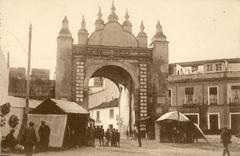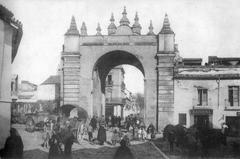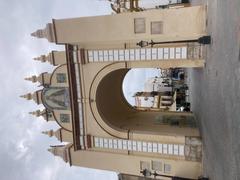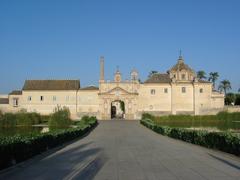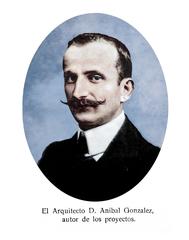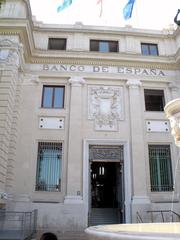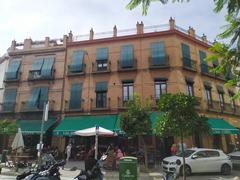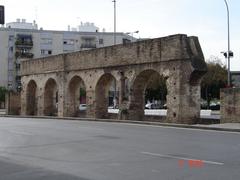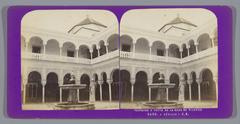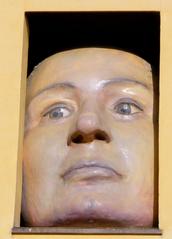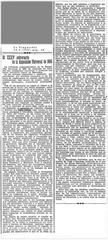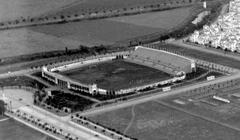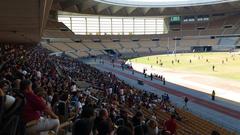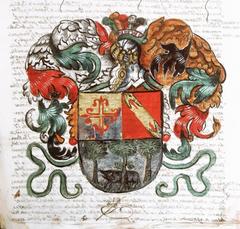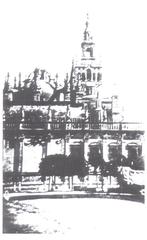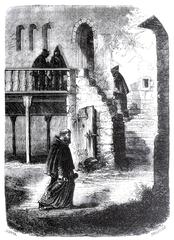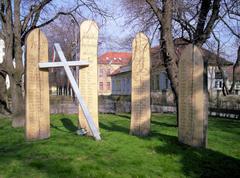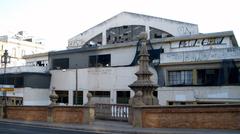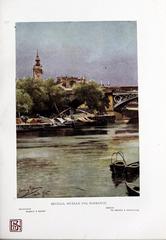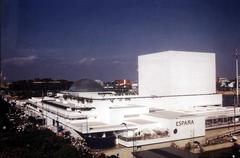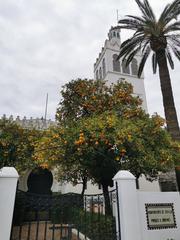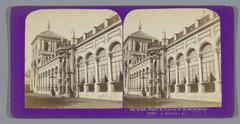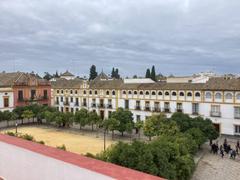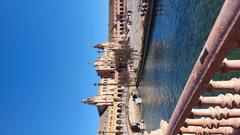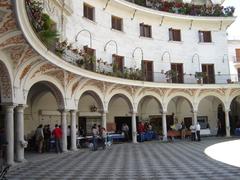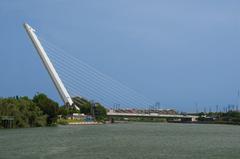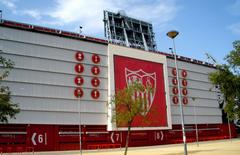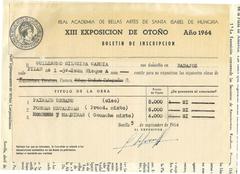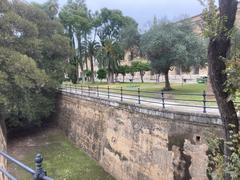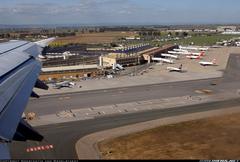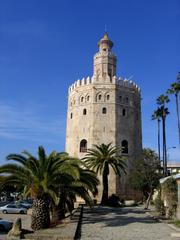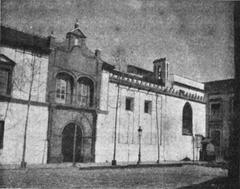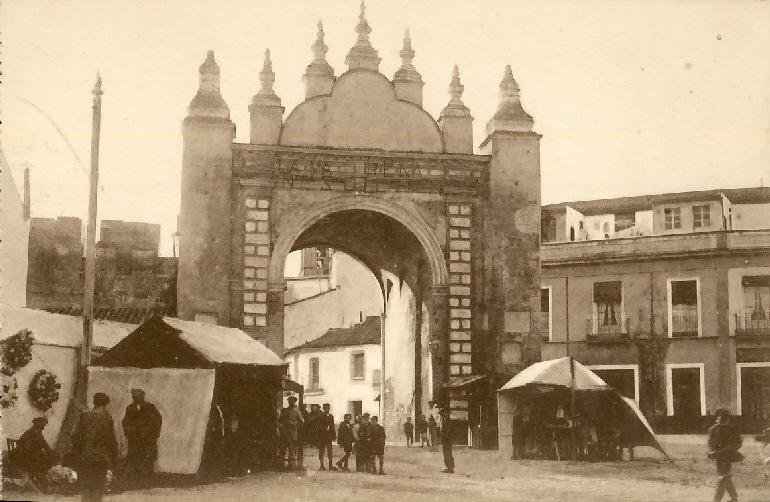
Visiting Puerta de la Macarena in Seville: Hours, Tickets, and Tips
Date: 18/07/2024
Introduction
The Puerta de la Macarena, also known as the Macarena Gate, is a historical treasure located in Seville, Spain, that dates back to the 12th century. This iconic gate has stood the test of time, witnessing the city’s evolution from its days under Muslim rule to its current status as a vibrant cultural hub. As a visitor to Seville, the Puerta de la Macarena offers a unique glimpse into the city’s rich history and architectural splendor. This comprehensive guide will delve into the history of the gate, provide practical visitor information, and offer tips to make the most out of your visit. Whether you’re a history enthusiast, a cultural explorer, or a casual tourist, this guide is designed to enhance your experience at one of Seville’s most significant landmarks (Seville Tourism).
Table of Contents
- Introduction
- History of Puerta de la Macarena
- Visitor Information
- Travel Tips
- Restoration and Preservation Efforts
- Modern-Day Relevance
- FAQ
- Conclusion
History of Puerta de la Macarena
Origins and Early History
The origins of the Puerta de la Macarena date back to the Almohad period in the 12th century when Seville was under Muslim rule. The gate was part of the defensive walls that surrounded Seville, designed to protect the city from invasions and attacks. The Almohads, a Berber Muslim dynasty, were known for their architectural prowess, and the construction of the city walls, including the Puerta de la Macarena, is a testament to their engineering skills (Almohad Architecture).
Architectural Evolution
Over the centuries, the Puerta de la Macarena has undergone several modifications and restorations. The most significant changes occurred during the Christian reconquest of Seville in 1248 by King Ferdinand III of Castile. After the reconquest, the gate was integrated into the Christian fortifications of the city. The architectural style of the gate reflects a blend of Islamic and Christian influences, a common feature in Andalusian architecture.
In the 18th century, the gate was renovated to include Baroque elements, which were popular at the time. Decorative features such as pilasters, cornices, and ornamental details were added, enhancing the gate’s aesthetic appeal. Despite these changes, the gate has retained its historical significance and continues to be a symbol of Seville’s rich cultural heritage.
Role in Seville’s Defense
The Puerta de la Macarena played a crucial role in the defense of Seville throughout its history. During the medieval period, the gate served as a strategic entry point to the city, controlling access and providing a vantage point for monitoring potential threats. The gate’s location on the northern side of the city made it a critical component of Seville’s defensive system.
In addition to its military function, the gate also served as a customs checkpoint where goods entering the city were inspected and taxed. This dual role as a defensive structure and a point of economic control highlights the gate’s importance in the daily life of medieval Seville.
Cultural and Religious Significance
The Puerta de la Macarena is not only a historical and architectural landmark but also holds significant cultural and religious importance. The gate is located near the Basilica de la Macarena, which houses the revered statue of the Virgin of Hope (Virgen de la Esperanza Macarena). This statue is a central figure in Seville’s Holy Week (Semana Santa) celebrations, one of the most important religious events in Spain (Holy Week in Seville).
During Holy Week, the statue is carried in a grand procession through the streets of Seville, passing through the Puerta de la Macarena. This event attracts thousands of visitors and pilgrims, highlighting the gate’s role as a focal point of religious devotion and cultural tradition.
Visitor Information
Tickets and Visiting Hours
The Puerta de la Macarena is open to visitors throughout the year. While there is no entrance fee to view the gate itself, visitors should check the opening hours of the nearby Basilica de la Macarena if they wish to explore more of the area’s historical and religious sites. The basilica generally opens from 9:00 AM to 1:30 PM and from 5:00 PM to 9:00 PM (Basilica de la Macarena).
Guided Tours and Special Events
Guided tours of Seville often include a visit to the Puerta de la Macarena. These tours provide valuable insights into the history and significance of the gate. Additionally, the gate is a prominent feature during Seville’s Holy Week celebrations, making it an ideal time to visit for those interested in experiencing the city’s vibrant cultural traditions.
Travel Tips
Nearby Attractions
The Puerta de la Macarena is conveniently located near several other notable landmarks. Visitors can explore the Basilica de la Macarena, the Andalusian Parliament, and the historic city walls. The area is also known for its charming streets and local eateries, offering a taste of traditional Andalusian cuisine.
Photographic Spots
For photography enthusiasts, the Puerta de la Macarena offers numerous opportunities to capture stunning images. The intricate architectural details and the gate’s historical ambiance make it a perfect subject for photography. The nearby basilica and city walls also provide picturesque backdrops.
Restoration and Preservation Efforts
In recent years, efforts have been made to preserve and restore the Puerta de la Macarena to ensure its longevity for future generations. The gate has been the subject of various conservation projects aimed at maintaining its structural integrity and historical authenticity. These efforts are supported by both local authorities and cultural heritage organizations, reflecting the gate’s status as a cherished historical monument.
One notable restoration project took place in the early 21st century, focusing on repairing damage caused by environmental factors and urban development. The project included cleaning the gate’s surface, reinforcing its structural components, and restoring decorative elements to their original condition. These efforts have helped to preserve the gate’s historical character while ensuring its continued relevance in modern Seville.
Modern-Day Relevance
Today, the Puerta de la Macarena stands as a symbol of Seville’s rich history and cultural diversity. It attracts tourists from around the world who come to admire its architectural beauty and learn about its historical significance. The gate’s proximity to other notable landmarks, such as the Basilica de la Macarena and the Andalusian Parliament, makes it a popular destination for visitors exploring the city’s historical and cultural heritage.
In addition to its historical and cultural value, the Puerta de la Macarena also serves as a reminder of Seville’s resilience and adaptability. The gate has witnessed numerous historical events and transformations, yet it remains a steadfast symbol of the city’s enduring spirit.
FAQ
What are the visiting hours for Puerta de la Macarena?
The gate itself is accessible at all times, but visitors should check the opening hours of the nearby Basilica de la Macarena, which is generally open from 9:00 AM to 1:30 PM and from 5:00 PM to 9:00 PM.
How much are tickets for Puerta de la Macarena?
There is no entrance fee to view the Puerta de la Macarena. However, guided tours that include the gate may have associated costs.
Are there guided tours available?
Yes, guided tours of Seville often include a visit to the Puerta de la Macarena, providing valuable insights into its history and significance.
Conclusion
Visiting the Puerta de la Macarena is more than just a sightseeing activity; it’s an enriching journey through Seville’s storied past. From its origins in the Almohad period to its role in the Christian reconquest, and from its architectural beauty to its cultural and religious significance, the gate encapsulates the essence of Seville’s historical and cultural heritage. As you stand beneath its arches, you are not just witnessing a structure but a symbol of resilience and continuity. Whether you visit during the bustling Holy Week or during a quieter time, the Puerta de la Macarena promises a memorable experience that connects you to the heart of Seville. For further information and updates, consider following local tourism websites and downloading travel apps to enhance your visit.
References
- Seville Tourism. (n.d.). Retrieved from https://www.visitasevilla.es/en
- Basilica de la Macarena. (n.d.). Retrieved from https://www.hermandaddelamacarena.es/
- Almohad Architecture. (n.d.). In Britannica. Retrieved from https://www.britannica.com/topic/Almohad-dynasty
- Holy Week in Seville. (n.d.). Retrieved from https://www.andalucia.com/festival/seville-semana-santa.htm
